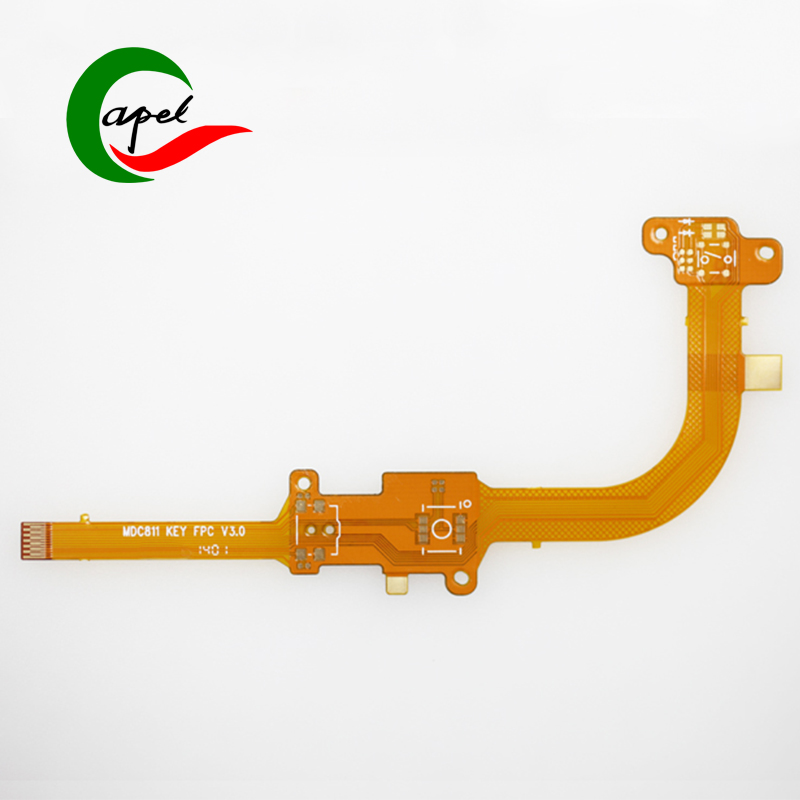


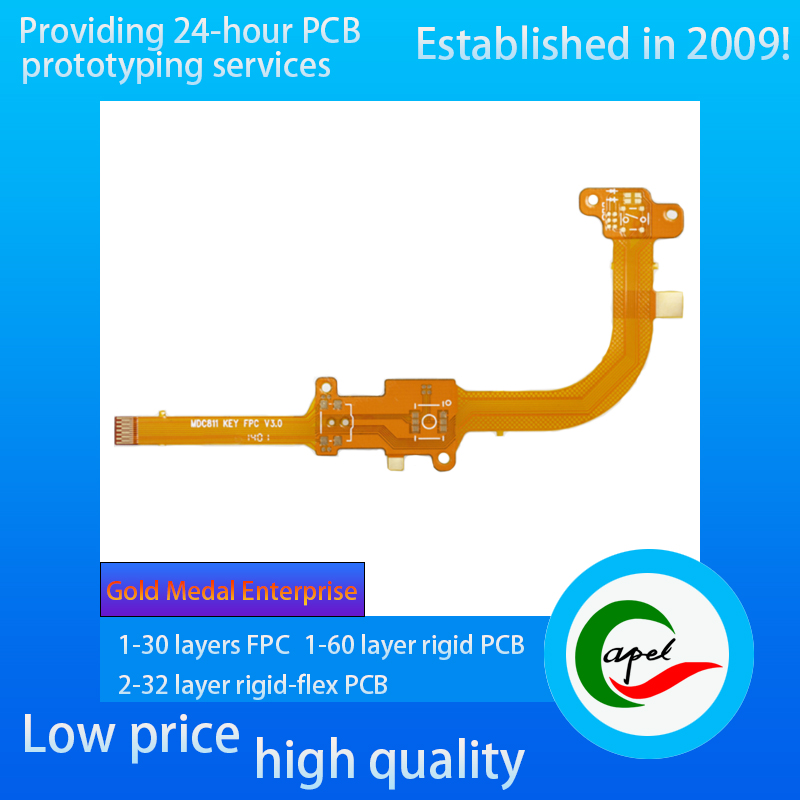
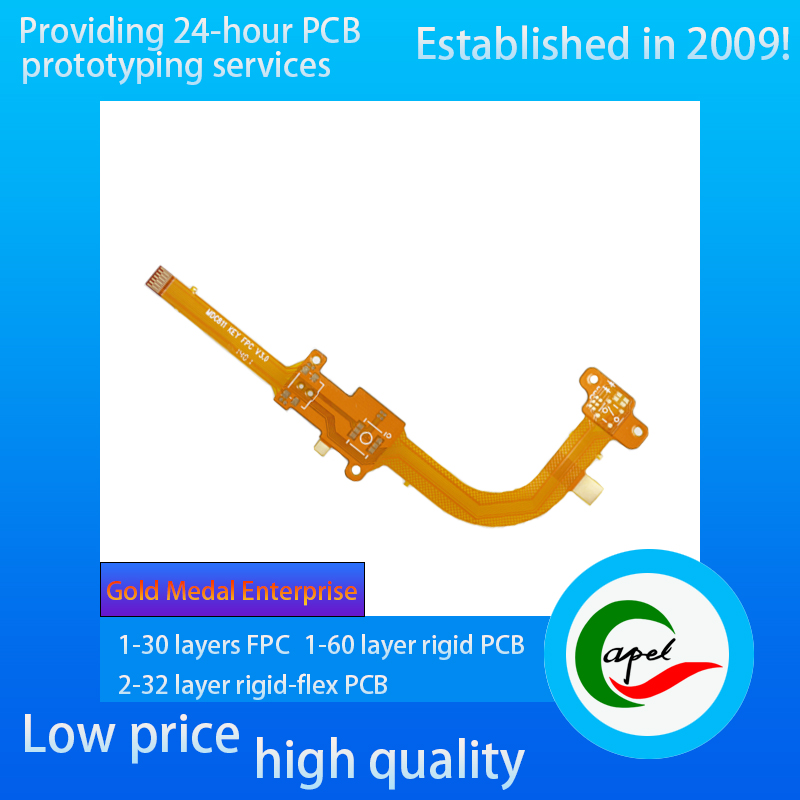
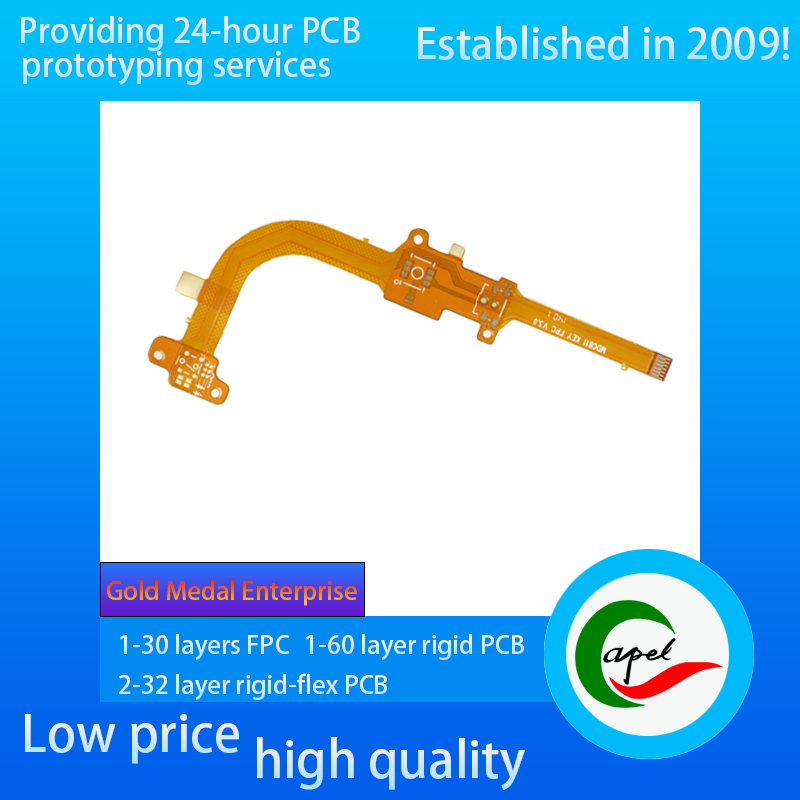
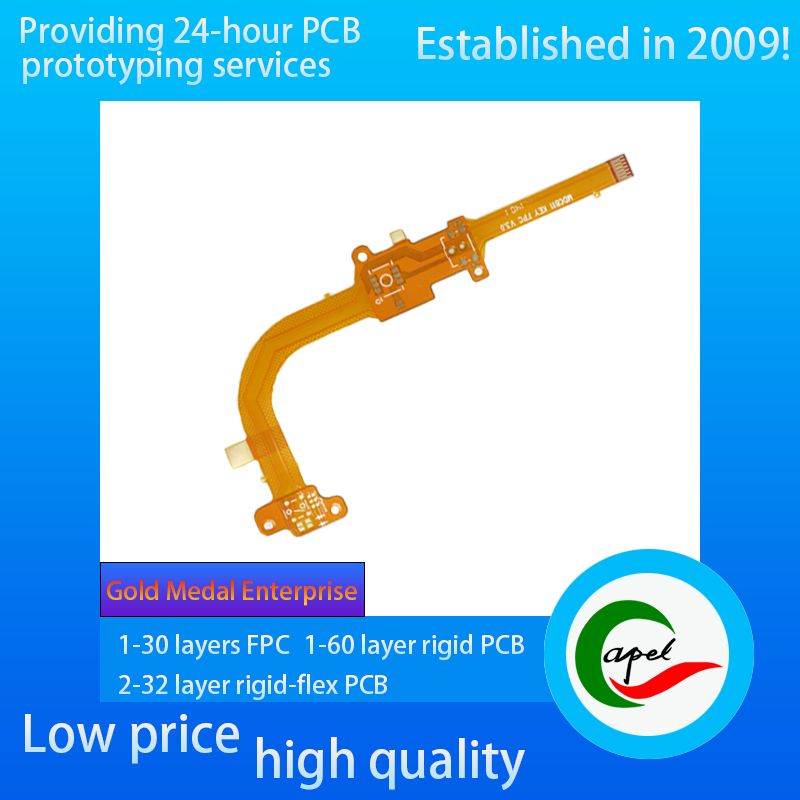

Digital Camera FPC
A short introduction:
Type: Digital Camera FPC
Minimum Line Width/Line Spacing: 0.1mm/0.08mm
Number of Layers: 1 Layer
Thickness: 0.12mm
Surface Finish: Immersion Gold 2 micro inches
Kaboer's Services:
Support Customized 1-30 Layer FPC Flexible PCB, 2-32 Layer Rigid-Flexible Circuit Boards, 1-60 Layer Rigid PCB, Reliable Quick Turn PCB Prototype Fabrication, Rapid SMT PCB Assembly
Industries We Serve:
Medical Device, IoT, TUT, UAV, Aerospace, Automotive, Telecom, Consumer Electronics, Military, Aerospace, Industrial Controls, Artificial Intelligence, Electric Vehicles, etc. ......
If you have related needs, please feel free to send us an email by clicking the button below.
Type: Flexible Printed Circuit (FPC) for digital cameras, designed for complex connections within imaging equipment, with excellent signal transmission performance and flexible adaptability. Whether it is the internal connection of the thin and light body of a card camera, the signal link between the lens and the main board of a microslope, or the display flip wiring of a DSLR, it can be flexibly adapted to the compact spatial layout of the camera (e.g., millimeter gap between the lens module and the sensor, and the curved part of the flip screen), and realize the distortion-free transmission of the high-definition signals output by the image sensors (e.g., 4K/8K video, 10 million-pixel image data), replacing the traditional rigid wiring. Replaces traditional rigid wiring to improve internal camera integration and operational reliability.
Minimum line width/spacing: 0.1mm/0.08mm for high precision. This parameter is optimized for the camera's high-frequency image signal characteristics: 0.1mm line width ensures that high-definition image signals (transmission rate ≥ 10Gbps) with lower transmission loss (signal attenuation rate of ≤ 0.2dB/m), reducing the loss of image details; 0.08mm line spacing to achieve a dense cabling within the limited space of the cable to support the image signals, focus control signals, and anti-shake commands are transmitted in parallel, to avoid crosstalk caused by signal noise, picture noise, and other noise. Crosstalk caused by picture noise, focus delay (crosstalk suppression ratio ≥ 65dB), to protect the clarity of imaging.
Number of layers: 1-layer structural design, through the minimalist structure to achieve high efficiency signal transmission:
single-level “signal + ground” parallel wiring, shorten the signal path length, reduce the image data loss, and reduce the number of signal paths. Shorten the length of the signal path, reduce the image data transmission delay (delay ≤ 50ns), suitable for high-speed continuous shooting scenarios (e.g., 20 frames per second without lag);
Simplified structure reduces the risk of signal reflection and improves signal integrity, especially suitable for card cameras, portable cameras and other devices with high requirements for lightweight. Single-layer design significantly reduces the thickness of the cable while guaranteeing the performance, which is suitable for the trend of thin and light cameras.
Thickness: Only 0.12mm thin and light, which is perfectly suitable for the “miniaturization and lightweight” design requirements of digital cameras. In card cameras (body thickness ≤20mm), it can significantly reduce the internal space occupied by the wires, releasing installation space for larger-capacity batteries and more advanced sensors; in reversible display modules, it can enhance the flexibility of bending (supporting a minimum bending radius of R=1mm), which can be adapted to the operation scenarios such as 360° flipping and multi-angle viewfinder, and avoid fatigue and fracture of the wires due to frequent bending.
Surface treatment: the use of immersion gold 2 micro-inch process (nickel layer thickness ≥ 5μm, gold layer thickness ≥ 0.05μm), to bring multiple consumer-grade advantages:
gold layer with excellent conductivity, contact resistance of ≤ 8mΩ, to reduce the loss of image signal transmission, to ensure that the degree of reproduction of the picture quality (color deviation of ≤ 2 ΔE); 2 micro-inch thickened gold layer corrosion resistance, can withstand internal camera oil, temperature and humidity changes (-10 ℃ ~ +60 ℃), to avoid long-term use of contact oxidation due to “signal interruption, screen flicker” and other issues;
Enhance the reliability of the solder joints. Ensure that the welded parts of the row of wires and lens motors and image sensors do not loosen during frequent focus and zoom operations, extending the service life of the equipment (design life ≥ 30,000 shutter operations).
| Category | Process Capability | Category | Process Capability |
| Production Type |
Single layer FPC / Double layers FPC Multi-layer FPC / Aluminum PCBs Rigid-Flex PCB |
Layers Number |
1-30 layers FPC 2-32 layers Rigid-FlexPCB 1-60 layers Rigid PCB HDI Boards |
| Max Manufacture Size |
Single layer FPC 4000mm Double layers FPC 1200mm Multi-layers FPC 750mm Rigid-Flex PCB 750mm |
Insulating Layer Thickness |
27.5um /37.5/ 50um /65/ 75um / 100um / 125um / 150um |
| Board Thickness |
FPC 0.06mm - 0.4mm Rigid-Flex PCB 0.25 - 6.0mm |
Tolerance of PTH Size |
±0.075mm |
| Surface Finish |
Immersion Gold/Immersion Silver/Gold Plating/Tin Plating/OSP |
Stiffener | FR4 / PI / PET / SUS / PSA/Alu |
| Semicircle Orifice Size | Min 0.4mm | Min Line Space/ width | 0.045mm/0.045mm |
| Thickness Tolerance | ±0.03mm | Impedance | 50Ω-120Ω |
| Copper Foil Thickness | 9um/12um / 18um / 35um / 70um/100um |
Impedance Controlled Tolerance |
±10% |
|
Tolerance of NPTH Size |
±0.05mm | The Min Flush Width | 0.80mm |
| Min Via Hole | 0.1mm |
Implement Standard |
GB / IPC-650 / IPC-6012 / IPC-6013II / IPC-6013III |












Kaboer manufacturing PCBs since 2009. Professional technology and high-precision Printed Circuit Boards involved in Medical, IOT, UAV, Aviation, Automotive, Aerospace, Industrial Control, Artificial Intelligence, Consumer Electronics etc..